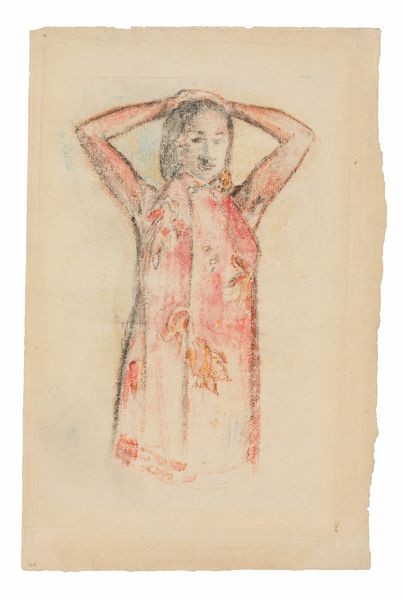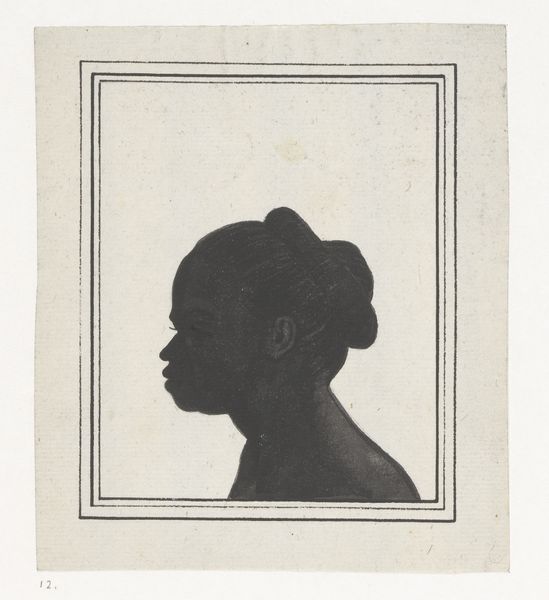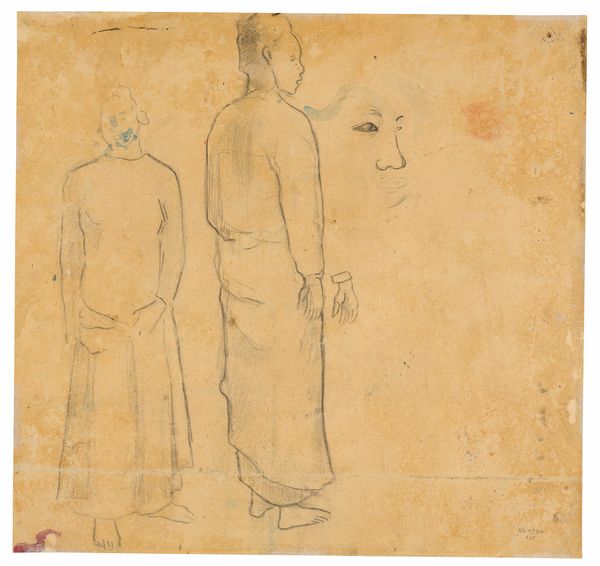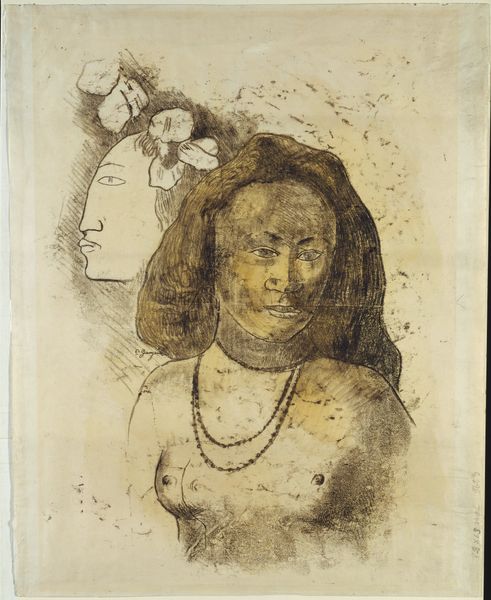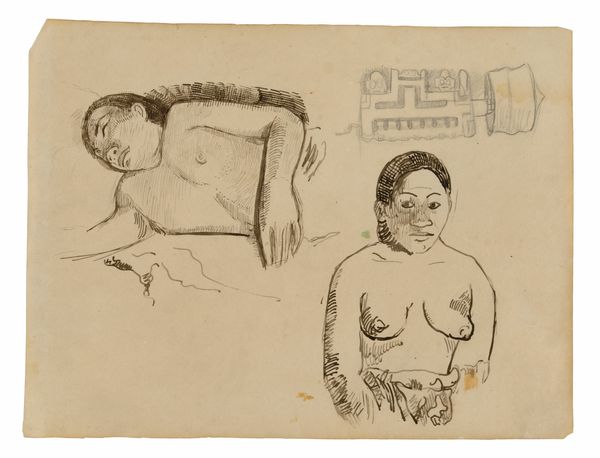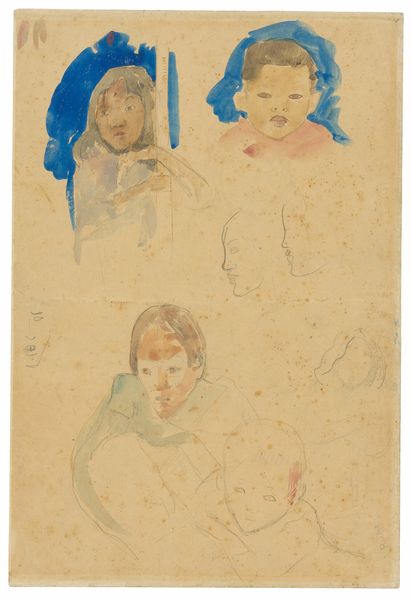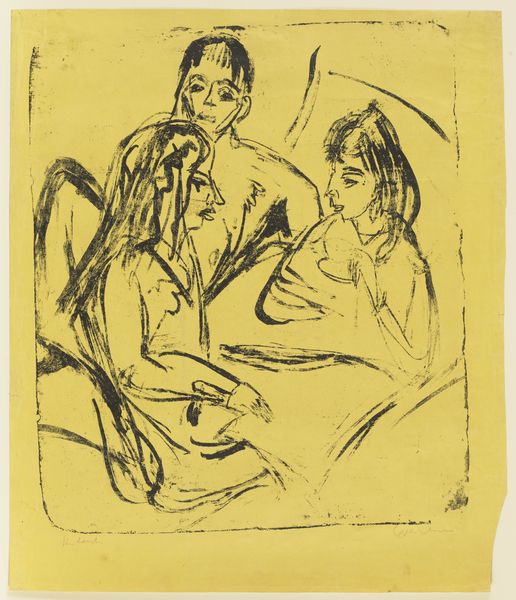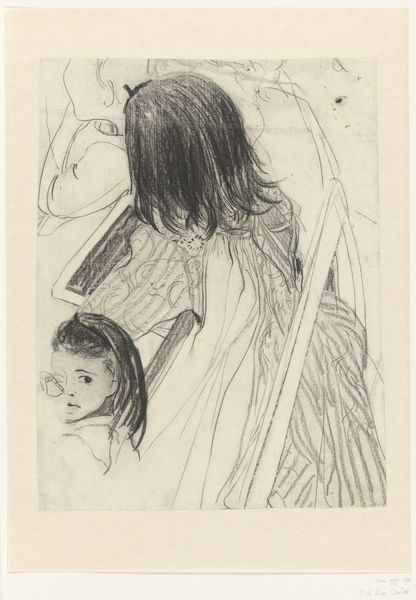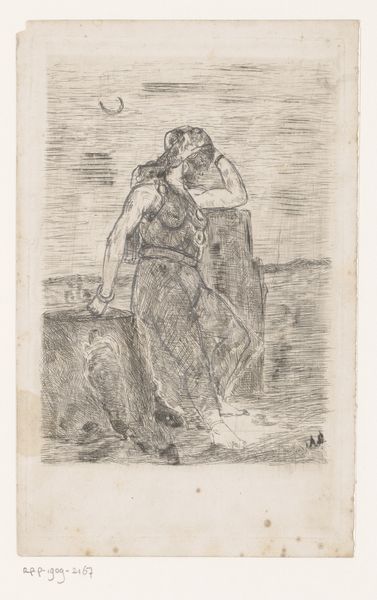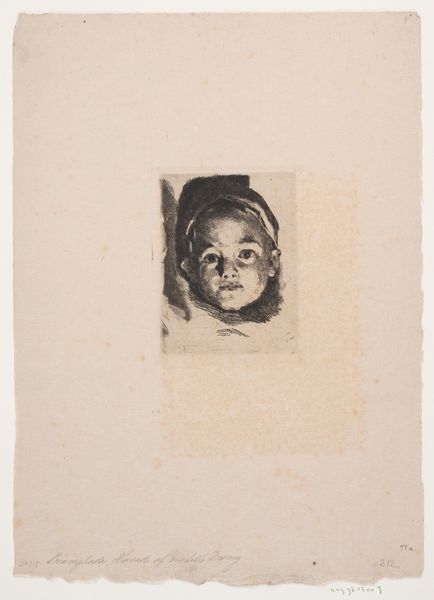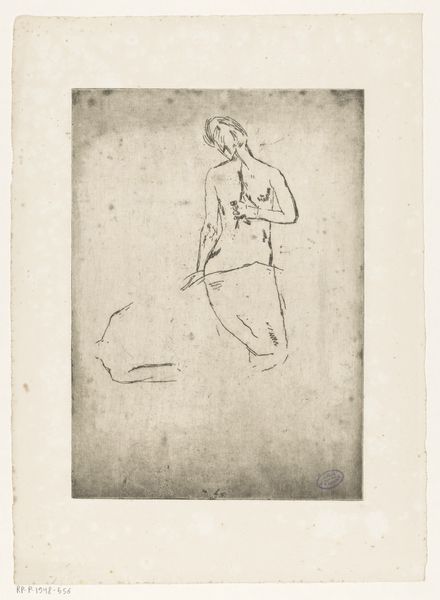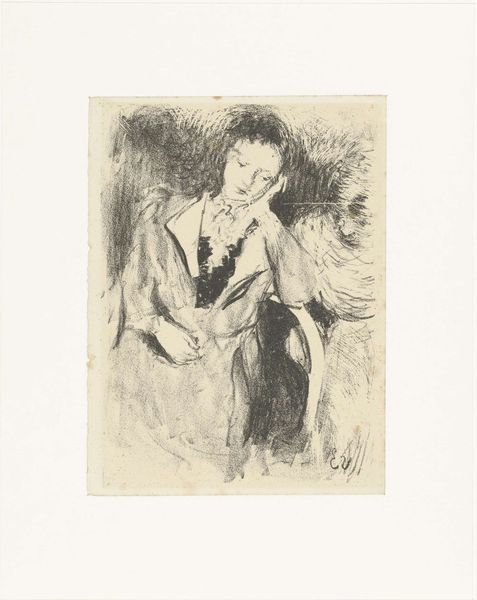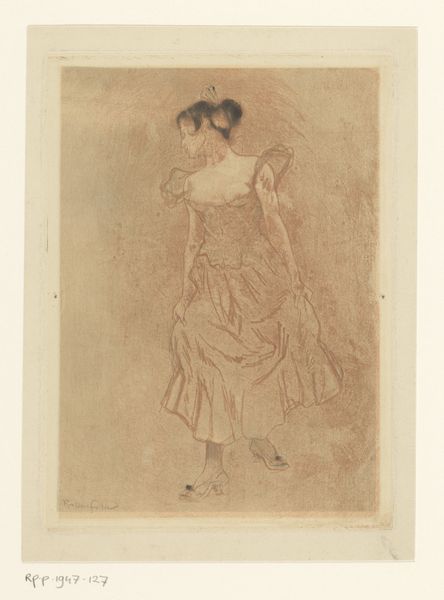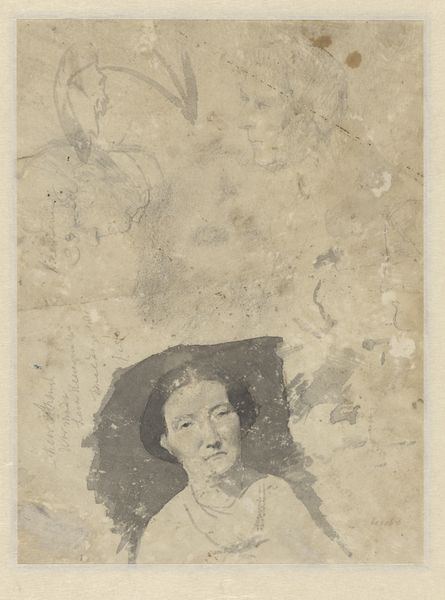
Dimensions: 275 × 270 mm
Copyright: Public Domain
Curator: The work before us is Paul Gauguin's "Tahitian Girl in Pink Pareu," executed in 1894, and it currently resides at The Art Institute of Chicago. The mixed pastel drawing hints at both the vibrant colours and underlying exploitation inherent in Gauguin's relationship with Tahiti. Editor: My first impression is the paper seems so fragile. Look at the soft, almost dusty texture of the pastel. It feels unfinished, raw, like we’re peeking into a very intimate moment of this woman’s life. Curator: Indeed. Gauguin made this piece following his first trip to Tahiti, and it speaks to a broader European fascination with the "exotic" and an attendant disregard for cultural authenticity. Editor: And it is such a telling thing to name the garment, pareu. Was Gauguin acknowledging a process? Pareus were made for commerce, to trade and export; they certainly represent both commodity and tradition. The pink here is almost painfully Western, isn't it? Curator: Exactly. The artistic choices can be seen as part of the complex socio-political web of colonialism and artistic license, reflecting both Gauguin's artistic intentions and the structures that enabled his Tahitian sojourn. Editor: I find myself returning to the technique itself, the medium. Pastel offers a directness, doesn't it? Pigment on paper; no mediation other than the artist’s hand. Yet that directness becomes so loaded considering the layers of power and cultural appropriation at play. Curator: He romanticizes Tahiti, even in a simple work on paper such as this one, solidifying his vision in the minds of his European audience—often without a truly reciprocal dialogue with his subjects or their culture. Editor: Looking closely at the materiality allows us to avoid simply accepting a beautiful picture. It becomes a tool for dissecting these imbalanced relationships and colonial gestures, demanding a more critical engagement. Curator: I agree. By understanding both the historical and material context, we move closer to acknowledging the real, multifaceted, human impact of Gauguin's work and legacy. Editor: Exactly. Art history should equip us with lenses to examine art's power and politics so we can work to decolonize our looking practices.
Comments
No comments
Be the first to comment and join the conversation on the ultimate creative platform.
